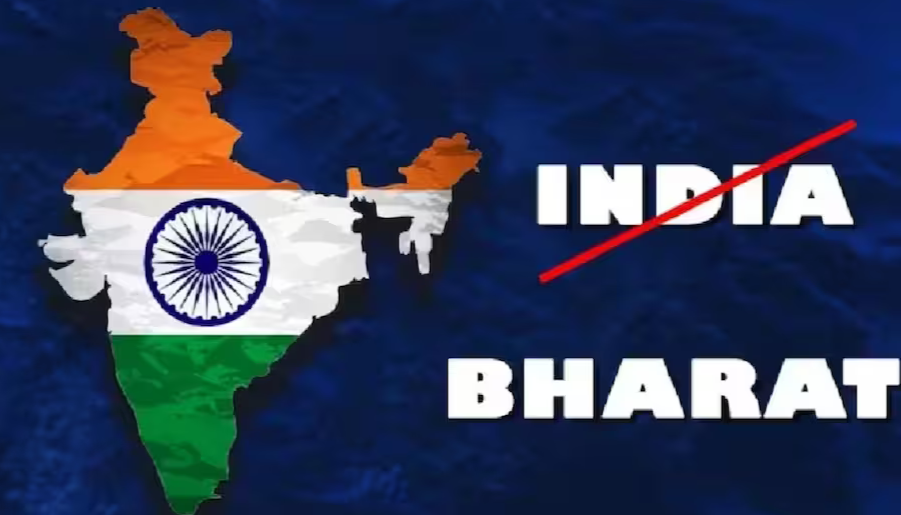
india vs bharat
In the land of diversity and paradoxes, India is a nation of many faces. It’s a country where tradition and modernity coexist, where bustling metropolises stand in stark contrast to serene rural landscapes, and where two distinct identities, India and Bharat, have engaged in a subtle yet perpetual tussle for supremacy. This ongoing debate not only encapsulates the essence of India’s complex socio-political landscape but also touches upon the attempts to hijack the legacy of the freedom movement that birthed this nation.
The Duality of India and Bharat
India, the term, conjures images of a rapidly developing nation, a global IT hub, and a land of bustling cities brimming with opportunities. It’s the India where startups thrive, and where the world’s largest democracy holds elections with millions casting their votes. This is the India that captures global attention and foreign investments.
On the other hand, Bharat paints a picture of a different realm altogether. It is the rustic, heartland India; the India of villages where traditional customs and agrarian lifestyles still hold sway. It is the India where millions depend on agriculture for their livelihoods, where folklore and age-old traditions are passed down from generation to generation. Bharat is the guardian of India’s rich cultural heritage, untouched by the fast-paced urbanization sweeping through the cities.
The Tug-of-War
The India vs. Bharat debate is not merely a linguistic or geographical divide but a reflection of the socio-economic disparity that plagues the nation. While India surges ahead, making strides in science, technology, and industry, Bharat grapples with issues like poverty, lack of access to education, and healthcare. This disparity has given rise to a perpetual tension, a tussle for resources and representation.
Supportive Keyword: Disparity
Attempts to Hijack the Legacy of the Freedom Movement
Amidst this ongoing debate, some individuals and groups have made attempts to hijack the legacy of India’s hard-fought freedom movement. The freedom movement, led by iconic figures like Mahatma Gandhi, Jawaharlal Nehru, and Sardar Patel, was a collective struggle against British colonial rule. It was a movement that drew strength from unity, transcending regional, linguistic, and cultural differences.
Reads More: Prabhas Wife Name
However, in recent times, the legacy of the freedom movement has been invoked selectively to serve political interests. Politicians have often used the names and ideologies of freedom fighters to further their agendas, sometimes dividing the nation rather than uniting it. The struggle for independence, once a source of national pride and unity, has become a tool for political maneuvering.
Preserving the True Spirit
In the midst of this tussle between India and Bharat and the attempts to hijack the legacy of the freedom movement, it is imperative that we preserve the true spirit of our nation’s struggle for independence. We must remember that the freedom fighters sought to create a nation where every citizen, regardless of their background, had equal rights and opportunities.
It is our responsibility to bridge the gap between India and Bharat, ensuring that progress reaches every corner of the country. We should celebrate our diversity and use it as a source of strength, rather than allowing it to divide us. By doing so, we can honor the legacy of the freedom movement and build a nation that truly lives up to the ideals for which our ancestors fought.
In conclusion, the India vs. Bharat debate is a reflection of the multifaceted nature of our nation. While this duality can be a source of strength, it can also lead to division if not managed carefully. By preserving the true spirit of our freedom movement and working towards inclusive development, we can bridge the gap and build a stronger, more united India. This, in essence, is the true legacy of our freedom movement.
Q1: What is the “India vs. Bharat” debate?
A1: The “India vs. Bharat” debate is a concept that highlights the socio-economic and cultural divide within India. It reflects the disparities between the rapidly urbanizing and modern India and the traditional, rural Bharat, which often lags behind in terms of development indicators.
Q2: How do India and Bharat differ?
A2: India typically represents the urban, cosmopolitan areas with modern infrastructure, while Bharat symbolizes the rural and traditional heartland of India, where agriculture and age-old customs are prevalent. The difference lies in lifestyle, opportunities, and access to resources.
Q3: What are the key issues in the India vs. Bharat debate?
A3: The main issues revolve around socio-economic disparities, access to education, healthcare, and opportunities. India faces rapid urbanization and development, while Bharat struggles with poverty and underdevelopment.
Q4: How has the legacy of the freedom movement been hijacked?
A4: The legacy of the freedom movement, which aimed at creating a united and independent India, has sometimes been exploited for political gains. Some politicians selectively use the names and ideologies of freedom fighters to further their own agendas, which can divide rather than unite the nation.
Q5: What can be done to preserve the true spirit of the freedom movement?
A5: To preserve the true spirit of the freedom movement, it is essential to bridge the gap between India and Bharat. Inclusive development policies, celebrating diversity, and ensuring equal opportunities for all citizens are crucial steps. This will honor the ideals for which our freedom fighters struggled.
Q6: How can individuals contribute to resolving the India vs. Bharat divide?
A6: Individuals can contribute by actively participating in initiatives that promote inclusive development, education, and awareness. Supporting policies that address rural development and economic disparities is also a significant way to bridge the divide.
Q7: Is the India vs. Bharat debate unique to India?
A7: The concept of urban-rural divides and socio-economic disparities exists in many countries but may take different forms. India’s unique history, cultural diversity, and size make this debate particularly significant in its context.
Q8: What is the significance of the freedom movement’s legacy in modern India?
A8: The legacy of the freedom movement serves as a reminder of the sacrifices made by our ancestors for independence and the ideals of unity, equality, and justice. Preserving this legacy is essential for fostering national unity and progress.
Q9: Can the India vs. Bharat debate be resolved completely?
A9: While complete resolution may be challenging due to the complexity of the issues involved, efforts to reduce disparities and promote inclusive development can significantly mitigate the divide and create a more equitable and united nation.
Q10: What is the role of education in addressing the India vs. Bharat divide?
A10: Education plays a pivotal role in bridging the divide by providing equal opportunities for all, irrespective of their geographical location. Access to quality education in rural areas is essential for empowering individuals and reducing disparities.
The India vs. Bharat debate and the attempts to hijack the legacy of the freedom movement are complex issues that require multi-faceted solutions and the collective efforts of government, civil society, and citizens to address effectively.
Author Bio:
This is Aryan, I am a professional SEO Expert & Write for us technology blog and submit a guest post on different platforms- Technoohub provides a good opportunity for content writers to submit guest posts on our website. We frequently highlight and tend to showcase guests.






Excellent .. Amazing .. I’ll bookmark your blog and take the feeds also…I’m happy to find so many useful info here in the post, we need work out more techniques in this regard, thanks for sharing.